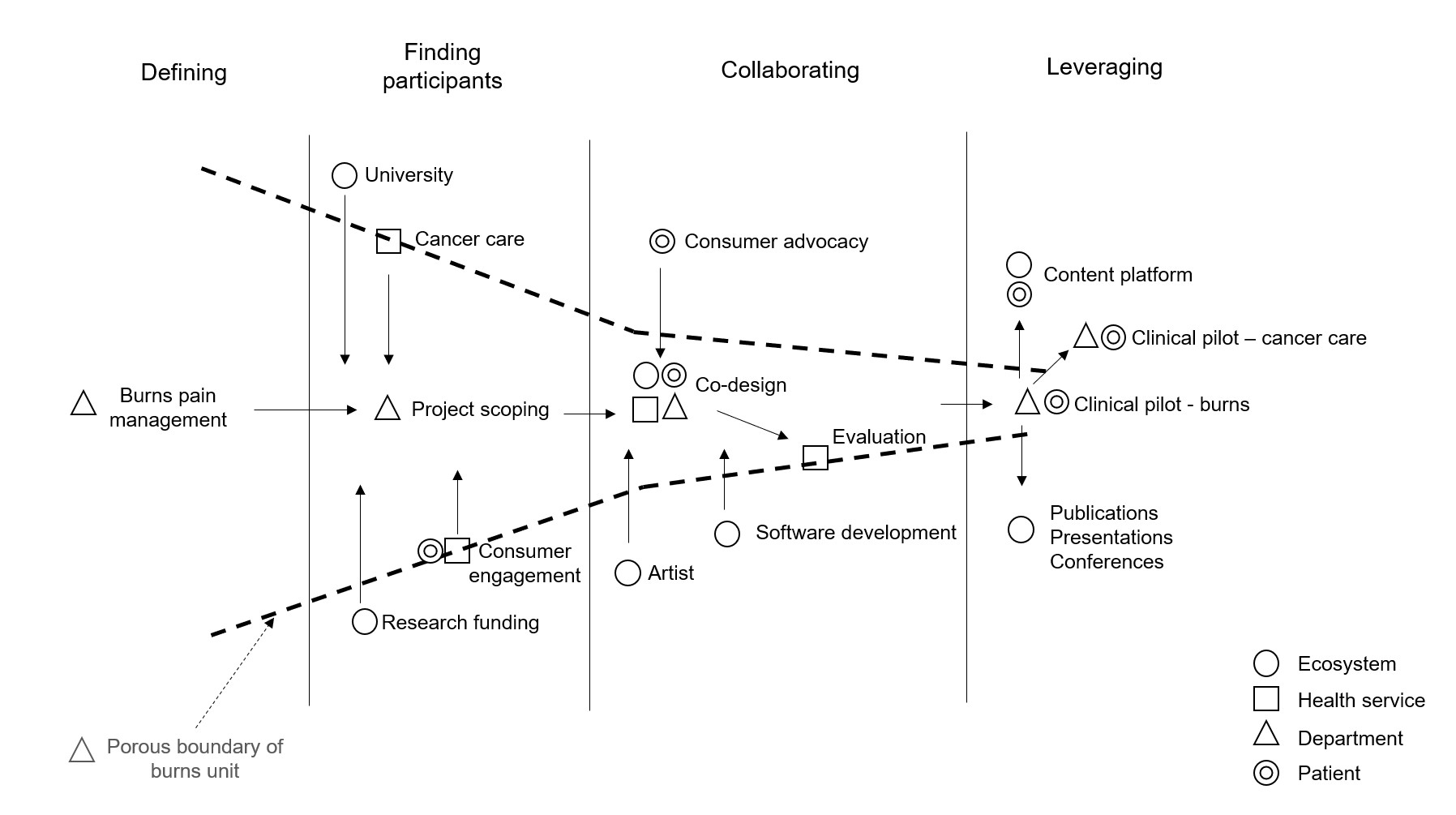Open innovation voices and choices: case studies of designing interactive virtual reality experiences in Australian public hospitals
Authors: Mathilde Desselle (MNH, QUT), Andrea McKittrick (MNH), Jason Brown (MNH), Marianelle Chamorro-Koc (QUT), Glenda Amayo Caldwell (QUT).
Affiliations: Metro North Health (MNH), Queensland University of Technology (QUT).
Virtual reality (VR) can offer many advantages as an adjunct of care when end-user involvement and practical integration in clinical workflows are considered from the start. This paper describes open innovation approaches that can help the integration and sharing of knowledge between multiple stakeholder groups, creating a platform for meaningful engagement towards the design and integration of VR technology as a routine part of the patient care pathway. Through two cases of VR design and use, this paper addresses the question: how can open innovation approaches facilitate meaningful stakeholder engagement for VR design in healthcare? Four portable principles are identified that summarise key learnings and may contribute to open innovation approaches for the design of VR for health services and human computer interaction practitioners engaging stakeholders at the ecosystem, health service, hospital department and patient level.

Figure: Open innovation funnel for the Pain Augmented Relief Method Virtual Reality project.
Session: Design and the Design Process – Wednesday 2022-11-30 16:00-17:30 AEDT
OzCHI 2022 Conference, Canberra ACT. 29 November – 2 December 2022.
Image credit for the Conference logo – The Australian Academy of Science.
